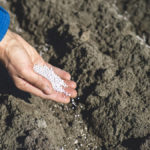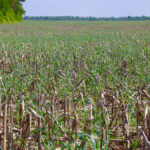Tag Archives Soil

Paquette Farms wins conservation award
Farm uses minimal-impact tillage and pays attention to precision nutrient application

Soil health products part of new entrant’s offering
Fertilizer stabilizers among products coming from Timac Agro

A good forage stand requires agronomic base
Keys to success include planting at right time, proper seed bed, seed placement, quality seed and weed control

Steel-making byproduct used as field tile filter
Conservation authority hopes to perfect farm-scale system for slag

New ONFARM program to build soil health measures and learning
The long-term program will help set up sites and resources for information sharing

Nutrient management program gets new look
Agrisuite updates to better accommodate farmers

Horsch debuts new primary tillage tool
The tool makes use of shanks versus discs popular on many primary tillage implements

Researcher grades on-farm soil management
Eastern Canadian farmers get high grades for soil health awareness, but low grades for increasing soil organic carbon

Cover crops decrease nitrate leaching
Living mass within soil reduces concentration of nitrate

Interpretive centre heading into fourth season with lysimeters
Unique sensors help collect data points to determine soil health
